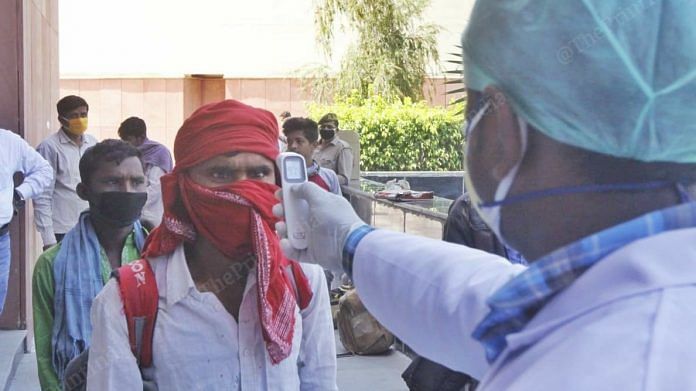New Delhi: Mohana Basu and Angana Chakrabarti of ThePrint analysed the first 46 deaths related to Covid-19 in India. They found that the average age of people who have died of this disease is 61 years. It would have been higher but for two of the youngest cases — one 25-year-old, who had a liver disease, died in Uttar Pradesh while a 38-year-old, with kidney failure, died in Bihar of Covid-19. Thirty-four out of the 46 fatalities had comorbidities — one or more pre-existing medical conditions. Another interesting pattern, which has also been observed in Spain and Italy, is that more men have died than women. Out of the first 46 people who have died in India, 36 were men.
Also read: 5 new projects India will pursue to find treatment for Covid-19 and similar diseases
Antibody tests
The Indian Council of Medical Research (ICMR) is considering antibody tests for Covid-19 in highly affected areas. Currently, only reverse transcriptase-polymerase chain reaction (RT-PCR) test is being performed in India for Covid-19. In an RT-PCR test, a chain reaction is conducted by a special enzyme “polymerase”, which targets a specific fragment of DNA that doubles at every cycle of reaction. If there is only one copy of the target gene in a test tube in the first cycle of PCR, there will be two, four in the second cycle and so on. If we conduct 20 such cycles, there will be 2^20 copies, a number large enough to detect.
The technology can be used only for DNA as starting material and cannot be directly used for the detection of RNA viruses, like coronavirus. So, coronavirus needs to be converted into DNA by an enzyme called Reverse Transcriptase, before it is subjected to PCR and hence the name RT-PCR.
Antibody tests, on the other hand, are based on the antibodies that the immune system produces to tackle a pathogen. Antibodies are generated by our immune system, which are specific to that invader. If we can detect the presence of specific antibodies in a blood sample, it can be safely presumed that at some point that individual was exposed to that invader.
Antibody tests weren’t considered due to certain downsides. Unlike the RT-PCR test, this doesn’t multiply anything, and hence it is not as sensitive. The human body takes some time to generate antibodies after it is exposed to an invader. Antibodies continue to be present in the blood for some time even after the invader is completely eliminated from the body and there are no clinical symptoms. The antibody-based test can be performed in most of the pathology laboratories, while RT-PCR needs a special instrument, which many labs may not have. Anti-Covid-19 antibodies take a duration of 5-8 days to be in sufficient quantities to be detected.
HLA genes
Narinder Kumar Mehra who is the ICMR National chair and former Dean of the All India Institute of Medical Sciences wrote in Hindustan Times about India’s unique feature that may help it fight the coronavirus crisis. He said India may be the outlier in fighting the coronavirus infection and succeed in keeping the overall numbers lower than the rest of the world with minimal deaths due to certain factors.
He noted the role of the human leukocyte antigen genes (HLA), which help the immune system fight pathogens in his article. He explained, “Their main biological function is to present invading foreign antigens to the immune systems, since T-cells, which act as the body’s soldiers come into play only when pathogens are presented to them in a more formal manner in association with HLA genes”. He argued that perhaps due to the constant exposure that Indians get to pathogens, the diversity of the HLA gene may be high among the Indian population and such genetic diversity of HLA could affect viral fitness.
Watch the latest episode of CTC here:
Also read: How India can buck the trend of global recession caused by coronavirus



